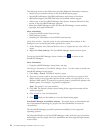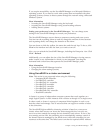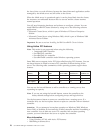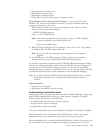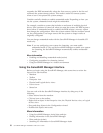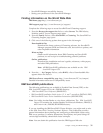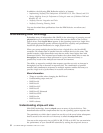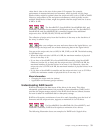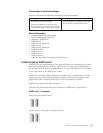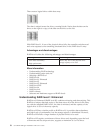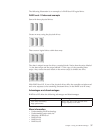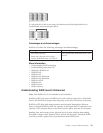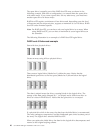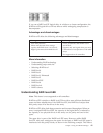
RAID level-0 example
Start with two physical drives.
Create an array using the two physical drives.
Then create a logical drive within that array.
The data is striped across the drives, creating blocks. Notice that the data is striped
across all the drives in the array, but no redundant data is stored.
A physical drive failure within the array results in loss of data in the logical drive
assigned RAID level-0, but only in that logical drive. If you have logical drives
assigned RAID level-1, 1E, 5, or 5E in the same array, they will not lose data.
Note:
If you have an array that contains only one physical drive, you can assign
only RAID level-0 to the logical drive in that array.
When you replace a failed drive, the controller can rebuild all the RAID level-1, 1E,
5, 5E, and 5EE logical drives automatically onto the replacement physical drive.
However, any data stored in a failed RAID level-0 logical drive is lost.
Although the risk of data loss is present, you might want to assign RAID level-0 to
one of the logical drives to take advantage of the speed this RAID level offers. You
can use this logical drive to store data that you back up each day and can re-create
easily. You also might want to use a RAID level-0 logical drive when you require
maximum capacity.
34 ServeRAID Manager Installation and User's Guide



